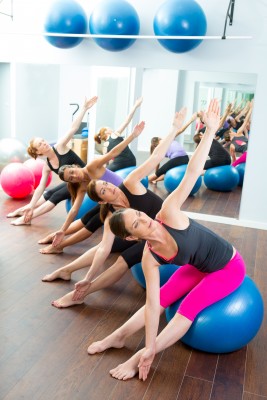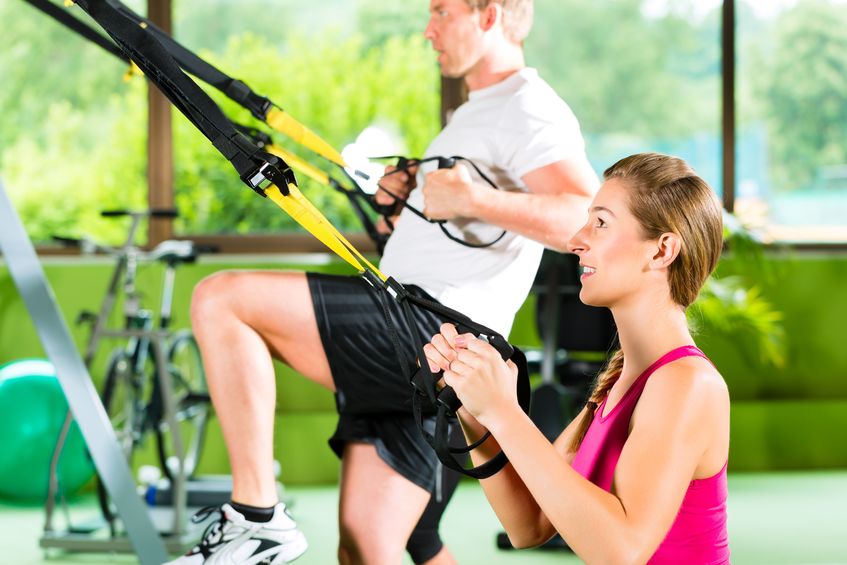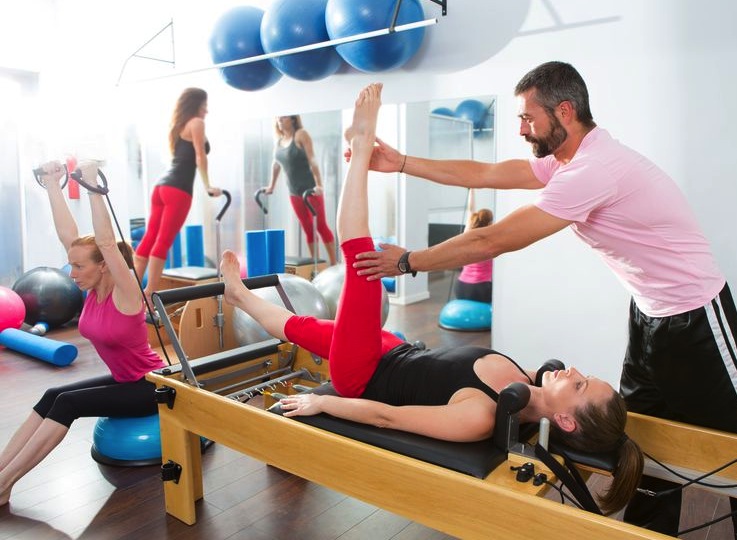What Workout is Best for You?

Tips For Starting a Workout
- Speak with a Physical Therapist about an exercise program that is good for you. Be patient and progress slowly.
- Most cardiovascular improvements take a minimum of 4 weeks to begin seeing results.
- Strength gains occur over a long period of time. True strength gains begin approximately 4 weeks after the initiation of the program providing there is enough resistance stimulus or overload to the muscle.
- Stretching can be performed before or after the exercise routine. Dynamic stretching is best before and static or dynamic stretching can be used at the conclusion of the routine.
- If you develop sharp pain during or after you exercise, start by placing ice on the injured body part and follow up with your doctor or Physical Therapist.
Starting a Successful Workout Routine
You’ve wanted to start a regular workout program and may be asking, “What should I do?” There are more workout choices than ever. Going to the gym to lift weights is no longer the only option in town. Not everyone wants to bulk up. The average person simply wants to develop strength, flexibility and endurance while also improving balance and coordination and reducing stress.
The first challenge to tackle in choosing a workout is choosing something that you will do on a regular basis. Consistent participation is a must for a successful exercise program. Finding a workout routine suited to your interests and goals can help make it a regular part of your lifestyle. Most Physical Therapists can guide you to the proper exercise routine that is best for you.
ACE Physical Therapy and Sports Medicine Institute regularly helps our clients choose exercises solutions that best fit their needs. Remember, all exercise routines can deliver great benefits if you perform them regularly and use the correct form and the right intensity. To help you consider the various options, we’ve provided our overview of several popular styles of exercise including Pilates, Cross Fit, Jazzercise, Kick boxing, Water Aerobics and TRX.
Pilates Workouts
 Ideal for developing a strong core presence Pilates stress proper breathing techniques and focus exercises on the core and hips. Referred to as the “Power-House,” it is believed that a strong core and hips help the rest of the body to work efficiently. There are a variety of Pilates’ routines for all levels of participants. Beginning exercises are oriented to a mat while the advanced stages incorporate special machines.
Ideal for developing a strong core presence Pilates stress proper breathing techniques and focus exercises on the core and hips. Referred to as the “Power-House,” it is believed that a strong core and hips help the rest of the body to work efficiently. There are a variety of Pilates’ routines for all levels of participants. Beginning exercises are oriented to a mat while the advanced stages incorporate special machines.
Pilates are great for body strengthening and neuromuscular control, but they do not incorporate a strong cardiovascular component.
Water Aerobics Routines
Due to the minimal gravity environment, water aerobic exercise programs place a decreased stress and strain on the joints and soft tissues. They can also make it easy to enjoy an increase in range of motion. Almost anyone can participate in water aerobics, and swimming is not required. A typical exercise program combines resistance exercises and cardiovascular training. Participants utilize the natural resistance provided by water and increase resistance through apparatuses like hand paddles. Various levels in water exercises can be achieved by exercising at different depths in the water (deep water programs typically utilize a flotation device). Participants tread water (deep water aerobics) or walk in shallow water for cardiovascular conditioning.
Water aerobics is not ideal for people who need a weight bearing exercise program like those seeking to prevent Osteoporosis.
Cardio Kick Boxing Exercises
Not for the “weak at heart,” Cardio Kick Boxing is a high intensity, full body workout. This is a non-contact program, but in some advanced classes, it does incorporate striking a heavy bag. Based on martial arts movements, participants perform a series of kicks, knee strikes, and punches to an upbeat musical score for about one hour. The nature and intensity of the movement makes it ideal for cardiovascular conditioning and resistance training for the entire body. The high intensity of the routine can be excessive for some people.
Jazzercise and other Dance-Oriented Exercise Programs
Beginners to the exercise “world” are often attracted to the fun nature of dance-oriented exercises. Utilizing a range of dance movements with upbeat music, these exercise programs increase the heart rate, burn calories, and focus on cardiovascular conditioning.
These exercises are less likely to provide resistance training. Participants should enter the program slowly to reduce the likelihood of suffering from over-use injuries.
TRX Training
Ideal for fast workouts and a variety of settings, TRX training exercises the entire body in a short amount of time. Anyone at any fitness level can participate. There are two primary types of routines that utilize body weight, lever bars and suspension systems to accomplish the goals of increased resistance exercise and cardiovascular conditioning.

The movements are performed at various speeds and throughout every plane of motion. TRX training delivers increased strength, balance, endurance and cardiovascular fitness.
Cross Fit Training
For a broad, general conditioning program, Cross Fit training is a popular choice for completing daily exercise routines. A wide range of participants can join in the exercises (regardless of age or skill level). Combining all aspects of working out and performed in a range of locations, these routines incorporate various cardio fitness exercises combined with explosive or strength building exercises done in a certain amount of time or repetitions. Modifications are made “on the go” to accommodate for a given individual’s need for a different intensity level. The exercise routines are designed to push the client to their maximum. These type of programs lack specific goals and consistent training principles focused on reaching a specific goal such as strength development, cardiovascular fitness, endurance training, etc.
One big problem is the lack of proper form and excessive training intensity that leads to various and numerous musculoskeletal injuries.

Your Physical Therapist can help you choose and modify a workout.
While each of these programs has specific benefits and challenges, they can potentially help you increase flexibility, strength and stamina or endurance. Success is dependent on consistent, enthusiastic and correct participation. Whether you are a beginner or are looking for specific training goals, a Physical Therapist will be able to guide you to a specific workout routine and modify it accordingly to meet your needs.
























